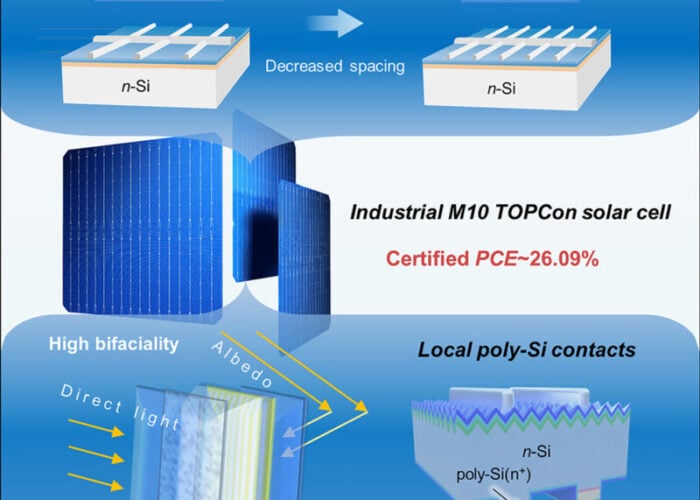Materials specialist, AkzoNobel is collaborating with the Solar Energy Research Institute of Singapore (SERIS) at the National University of Singapore in a bid to offer lower-cost ALD and PECVD precursors for aluminium oxide passivation layer processing.
Backside c-Si solar cell passivation is seen as a key technology step being deployed by PV manufacturers to improve cell efficiencies along with PERC and MWT technologies.
Try Premium for just $1
- Full premium access for the first month at only $1
- Converts to an annual rate after 30 days unless cancelled
- Cancel anytime during the trial period
Premium Benefits
- Expert industry analysis and interviews
- Digital access to PV Tech Power journal
- Exclusive event discounts
Or get the full Premium subscription right away
Or continue reading this article for free
AkzoNobel’s High Purity Metalorganics (HPMO) business unit has already developed a new technology for the production of high purity trimethylaluminum (TMAl), known as ‘TMAL Solar.’
However, the work at SERIS will focus on more cost-efficient metalorganic precursor grades that also need to be robust for the long-term performance of high efficiency solar cells.
“Solar cell manufacturers are constantly balancing between cost and performance. This is especially true for their raw materials,” said, Alberto Allegro, global business director, AkzoNobel HPMO. “As one of the leading suppliers of high purity metalorganics to the semiconductor and solar industries we have developed significant knowledge in this field. A good example is TMAL Solar, a specific solar grade of Trimethyl Aluminum for c-Si solar cell back surface passivation. This, coupled with SERIS’ thorough understanding of silicon wafer cell structures is the basis for the development of specific cost efficient precursor grades.”
“At SERIS, one of the main focus points is to bring down the cost of PV electricity. We believe that this is best done in close collaboration with the whole PV value chain,” added, Dr Bram Hoex, director of Silicon Materials and Cells at SERIS. “We explore various advanced silicon wafer solar cell structures that we intend to bring to high-volume manufacturing in the PV industry.”
Recently, Singapore-based PV manufacturer, REC Solar said it planned to integrate a passivation process to its cells as part of an upgrade and capacity expansion.
AkzoNobel believes that industrial grade trimethyaluminum used in the plastics industry and ultra-pure trimethylaluminum, used in the semiconductor industry are not ideal for the PV industry, while its TMAL Solar trimethylaluminum offers lower-cost and higher performance.






